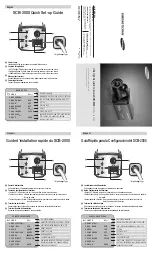
V1.02
Thom Hogan’s Complete Guide to the Nikon D300
Page 357
Here’s the misnomer about
Hue
and the reason why I showed
the color wheel the way I did: minus values don’t “warm”
while plus values “cool.” Some colors may get “warmer” or
“cooler,” but the color spectrum is a continuous circle, so
every color is affected in slightly different ways:
Hue Minus
Values
Hue Plus
Values
Red
Adds magenta
Adds yellow
Magenta
Adds blue
Adds red
Blue
Adds cyan
Adds magenta
Cyan
Adds green
Adds blue
Green
Adds yellow
Adds cyan
Yellow
Adds red
Adds green
Thus, a skin tone, which has reds and yellows in it, gets both
a red and a magenta boost with a minus
Hue
value, which
may not be what you want. On the other hand, a plus
Hue
value might take the skin yellower and greener. Which is the
better choice? Well, it depends upon whether reds (plus) or
yellows (minus) dominate the skin tone. And, of course, all
the other colors are shifting, as well. In short, be very careful
with hue adjustments.
Saturation Parameter
The Picture Controls allow you to control the saturation
parameter from
-3
(remove saturation) to
+3
(add saturation)
Saturation is easy to understand if you think about it in terms
of CIE Lab Color definitions, where luminance (brightness) is
separated from chroma (color) information. If you boost
saturation, you don’t change the brightness of a pixel, you
increase the amount of color in that pixel. Personally, I dislike
added or subtracting saturation via Picture Control, as it is
difficult to change your mind after the fact and remove your
decision via post processing. The more you boost or reduce
the saturation, the more difficult it is to correct.
















































